El Salvador Coffee El Salvador Olive Manor Honey treatment
Finca Montes El Corozo
El Salvador Olive Manor
Manor: olive Tree Manor
Altitude: 1800-1950m
Variety: Kenya SL28
Treatment: honey treatment
Grade: SHB
El Salvador, known as the "land of volcanoes", is the smallest and most densely populated country in Central America. It is also the only country in Central America that does not rely on the Atlantic Ocean, bordering Guatemala in the northwest and Honduras in the northeast.
Salvadoran coffee has a unique flavor, taste of Toona sinensis, moderate sweet and sour, rich aroma, and charming tonality.
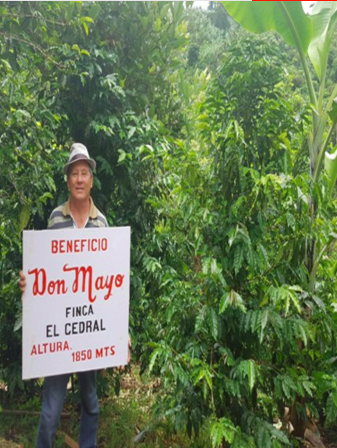
El Salvador is mainly divided into five main producing areas, namely Apaneca, Central Belt, Chichontepec, Tecapa & Cacahuatique Mountain Range, which are roughly distributed on alpine slopes or plateau areas covered with volcanic ash above 1200 meters above sea level. Most of them grow coffee by "shade" (planting Shade Grown in the shade of trees). The advantages of this method are that coffee beans can mature uniformly, honey mucus content increases, weight is high, and sweet polyphenols are more likely to be formed. Let the main ingredients of coffee beans be fully formed. For coffee trees with too much sunshine, the edges of the leaves will be rolled up, causing water loss, which is not conducive to photosynthesis, reduce carbon dioxide absorption, and reduce the combination of sugar.
The Olive Manor, which began growing coffee in 1930, surrounds El Salvador's famous LOS VOLCANES National Park. There are rare volcanic flowers around the farm, and there are wild reindeer, raccoon, mountain pig and other wild animals in the national park, which has become a very interesting wild ecological chain.
As the manor is located on the volcano, it is a very fertile volcanic terrain. In 2006, when the Ilamapepec volcano erupted, the ash covered the manor directly. Although the coffee farm was damaged at the time, it became more fertile because of the fertile volcanic soil a few years later.
The Olive Manor has been a fully organic farm since 2016, with Rainforest Alliance certification, where coffee production is managed in traditional processes, washed with clean water and dried in a clay courtyard.
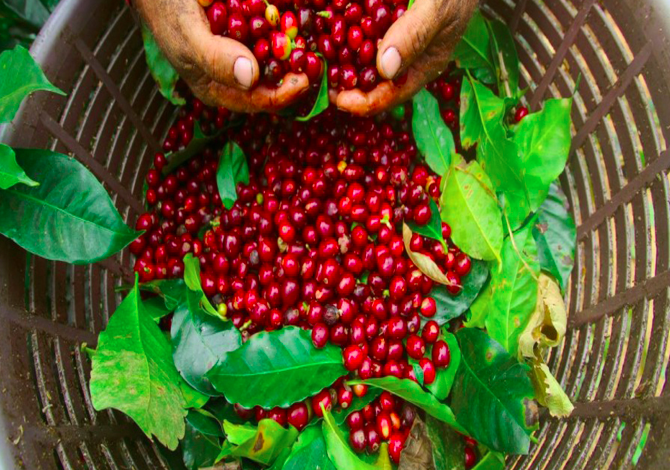
The olive manor is planted in a way that has been handed down in El Salvador for a century. Local Ingas, pomelo and olive trees are used as shade trees, and more than 75 species of trees are cross-shaded to form a natural forest interlaced with coffee trees. And the nourishment of this volcanic soil makes this beautiful coffee garden. The variety of this bean is mainly Kenyan SL28. The Kenyan SL28 is the two most respected varieties produced by the Scott laboratory in Kenya in the 1930s. The Scott Laboratory no longer exists, but it is now the National Agricultural Laboratory and part of the Kenyan Agricultural and Animal Husbandry Research Organization. Both varieties are bourbon-derived varieties, although from different pedigrees: SL-28 was developed from a drought-resistant variety originally planted in Tanganyika, which is part of modern Tanzania; it is generally considered to be of the highest quality but less productive than other commercial Arabica varieties. The SL variants all show bronze tender leaves, and the output from SL28 is not as large as expected, but copper leaves and broad bean-shaped beans have great sweetness, balance and complex flavor, as well as significant citrus and black plum characteristics, and coffee flavor has a strong rich acidity, rich taste and beautiful balance.

This bean is treated with honey, which is widely used throughout Central America. Because the surface mucosa of coffee beans is extremely sticky and high in sugar, it is often called "honey". In the process of honey treatment, coffee will leave some or all of the "honey" when it is dried. After the coffee fruit is picked, graded and peeled, it is placed on a drying bed to dry.
The acidity of coffee beans processed by this method is slightly higher than that of natural washing, but much lower than that of natural washing and natural sun processing.
Baking analysis
Roaster Yangjia 800N (baking capacity 300g)
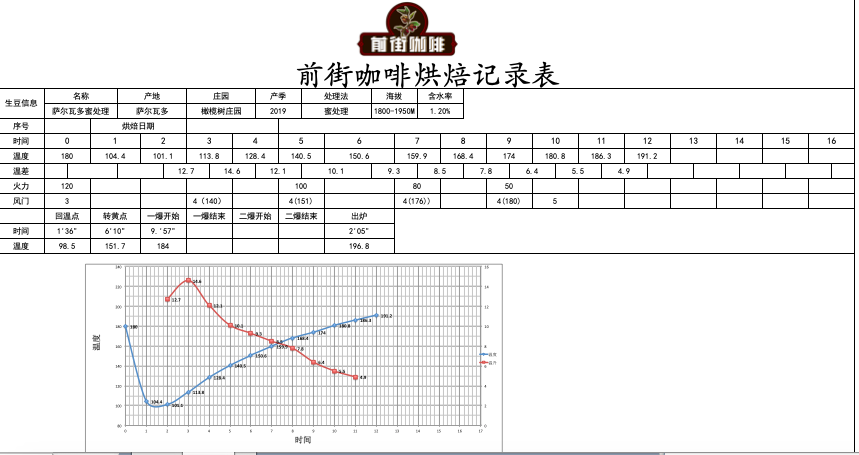
The furnace temperature is 180 ℃, the firepower is 120, and the throttle is set at 3; the temperature recovery point is 1 ", and the throttle is opened to 4 at 140℃, and the firepower remains unchanged; when the furnace temperature is 151℃, the bean meter turns yellow, the grass smell disappears completely, and enters the dehydration stage. When the furnace temperature reaches 176℃, the firepower is adjusted to 80, and the throttle remains unchanged.
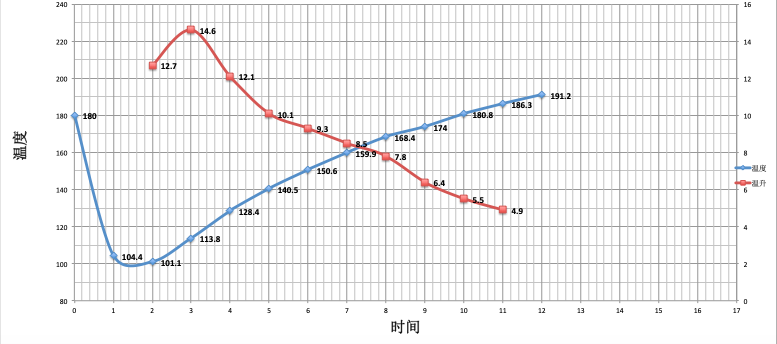
The smell of toasted bread has obviously changed to the smell of coffee, which can be defined as a prelude to an explosion. At this time, it is necessary to listen carefully to the sound of the explosion point. When the sound of the explosion point begins to explode, the throttle will remain unchanged. After the explosion, the development of the bean surface will be changed, and the smell of the toast will obviously turn into coffee, which can be put into the pot for 196.8 ℃.
| | Cup mapping |
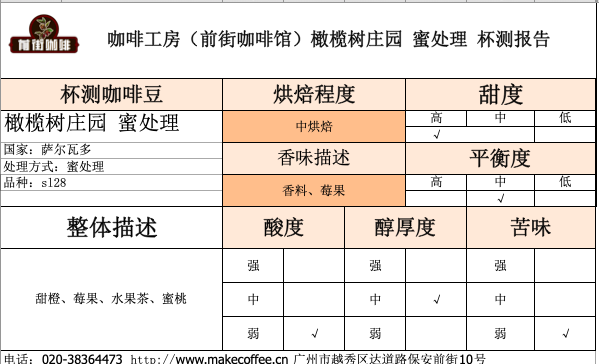
Flavor: sweet orange, berry, fruit tea, peach
| | recommendation for hand flushing |
Qianjie coffee is suggested to be brewed by hand.
Filter cup: V60
Water temperature: 88-90 ℃
Powder / water ratio: 1:15
Degree of grinding: BG 6S (Chinese standard No. 20 screen pass rate 58%), that is, medium fine grinding
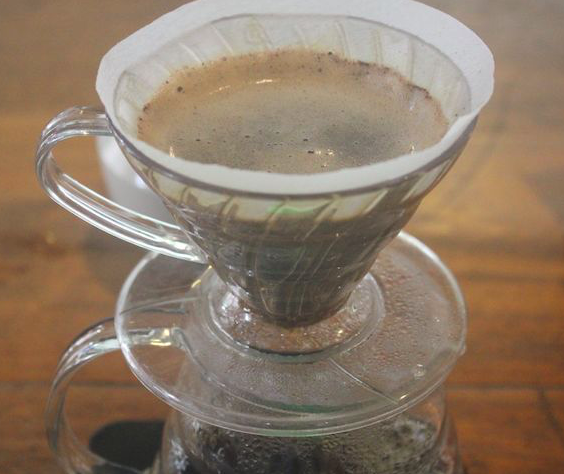
Flushing and cooking technique: segmented extraction. Steam with 33 grams of water for 30 seconds, small water flow around the circle to 125 grams for sectional injection, water level drop is about to expose the powder bed, continue to inject water to 228 grams to stop water injection, such as water level drop is about to expose the powder bed to remove the filter cup, (steaming starts timing) extraction time is 1 million 39 percent 56 ".
Flavor: the overall sweetness is obvious, the imported berries, peaches and oranges drink fruit tea under the change of temperature, and the aftertaste has the aroma of peach.
Important Notice :
前街咖啡 FrontStreet Coffee has moved to new addredd:
FrontStreet Coffee Address: 315,Donghua East Road,GuangZhou
Tel:020 38364473
- Prev
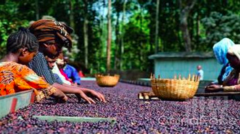
coffee producing areas| Ethiopian Harar Wild Coffee Details
Ethiopia is the world's largest coffee gene pool. As the birthplace of coffee, Ethiopia has nine fine coffee producing areas, rich in coffee varieties, and different coffee producing areas breed different coffee flavors. Ethiopia's nine major producing areas: Yegashefi, Sidama, Hara, Limu, Kimma, Irubaba, Kimbi (Lekanti), Tiebi (Bebeka), Tana
- Next
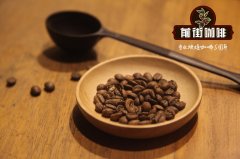
Indonesia Kingmant Coffee has the characteristics of conquering the world
Professional coffee knowledge exchange for more information on coffee beans, please follow the front street of coffee workshop (Wechat official account cafe_style)-Kingmante Coffee PWN GOLD Mantheling 01 | the main producers of Indonesian Coffee are Montaigne Coffee, Java Coffee and La Viagra Coffee, among which Mantal Coffee is the most famous. Mann
Related
- Detailed explanation of the proportion of gold gouache in hand-brewed coffee? What are the Gold Cup Guidelines?
- What is the difference between the gold label rose summer and the red label rose summer in Guixia Village? Are Rose Summer 1931 and Gori Rose Summer?
- Cudi stores ban other brands of coffee?! Netizen: No problem
- Is it better to make coffee cold or hot? Why is it recommended to drink hot coffee?
- Lucky people collapsed! The store ceiling is full of AI surveillance cameras?!
- Law Enforcement Bureau? Mixue Ice City enters Zhengzhou BRT platform!
- Heavy! Nestlé has been exposed to consider selling blue bottle coffee!
- Compensation of 270 million yuan! Starbucks has been charged with violating labor laws more than 500,000 times!
- What are Xizhao coffee beans? Why did they become champion beans? How to rush to the manor on the dividing line in Colombia?
- What does channel effect mean in coffee? Why are there holes in the coffee powder cake?

